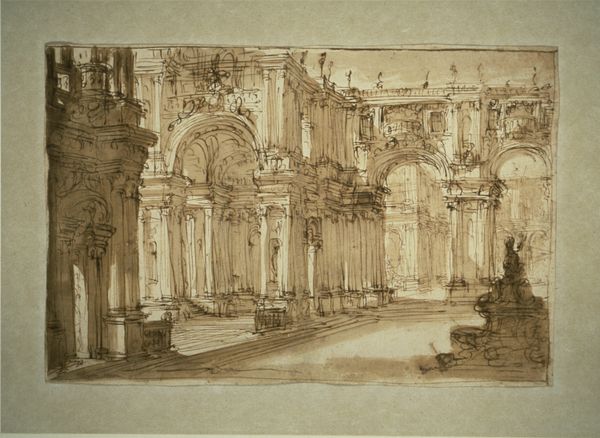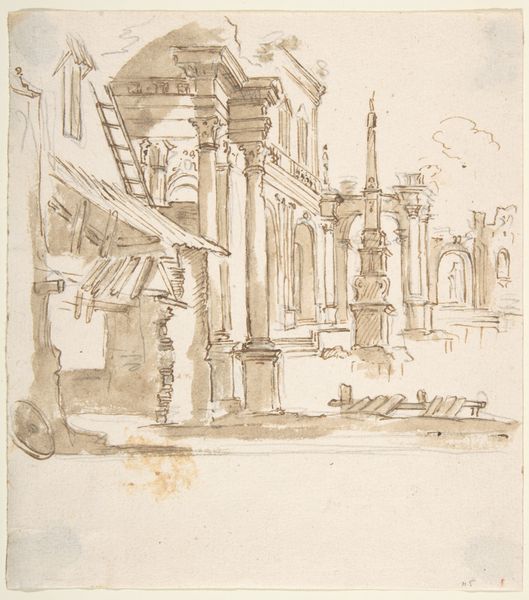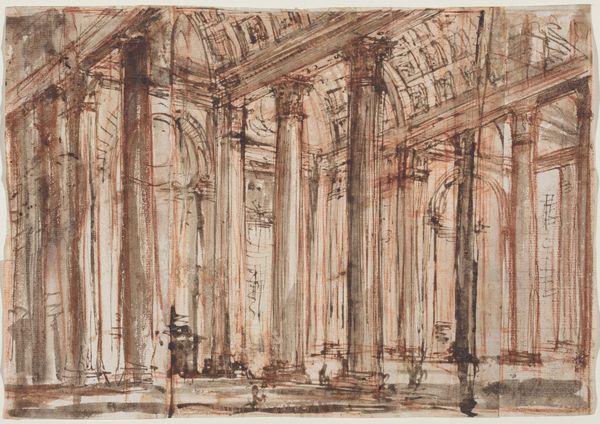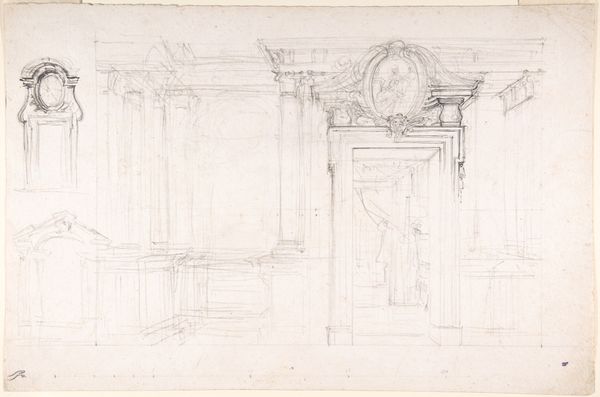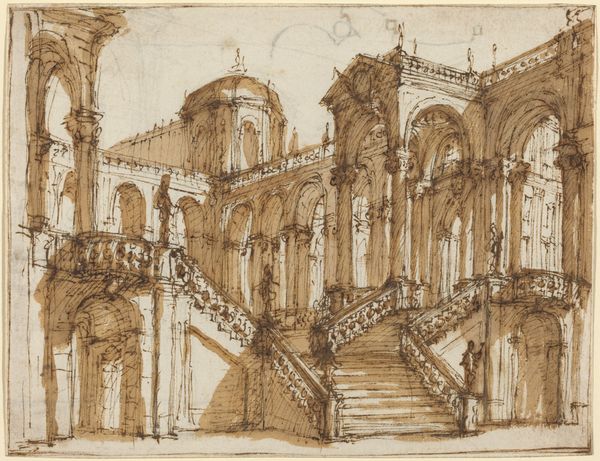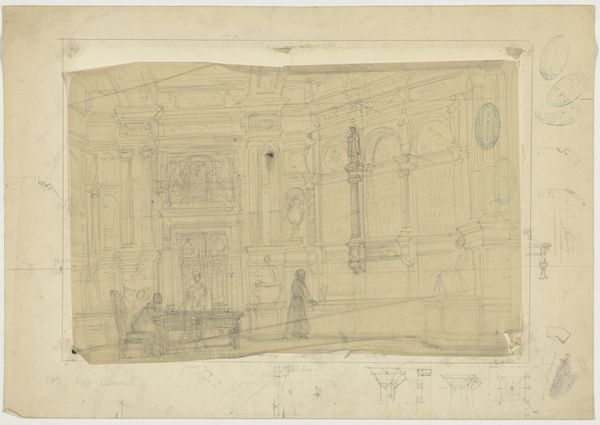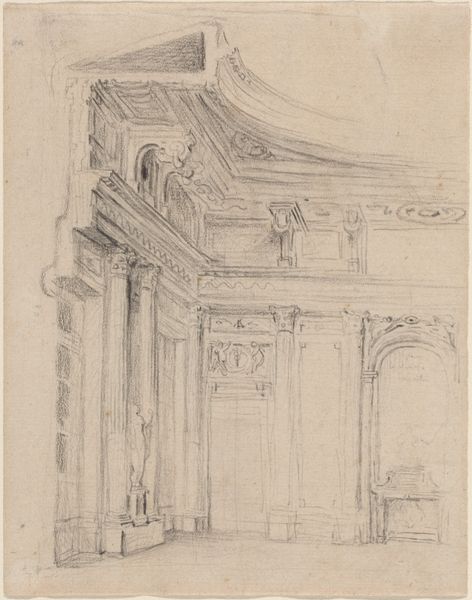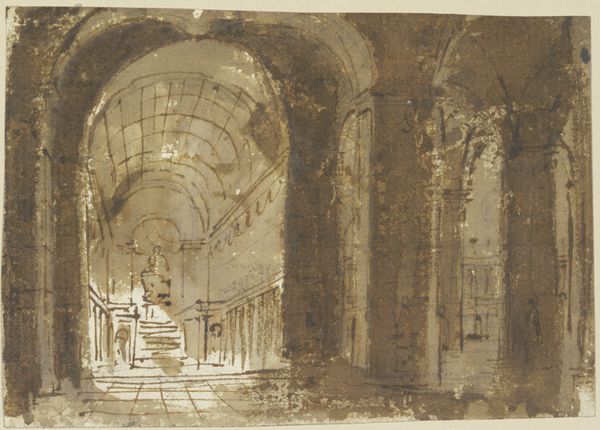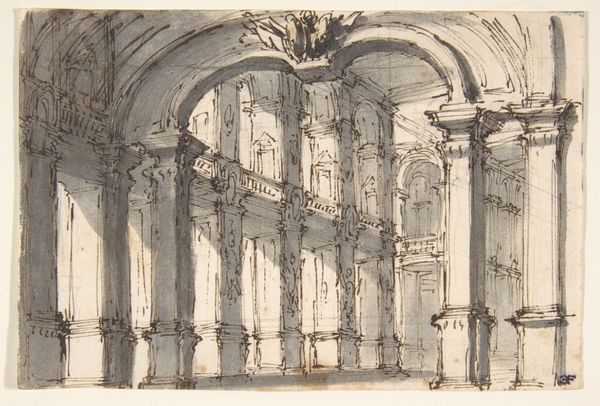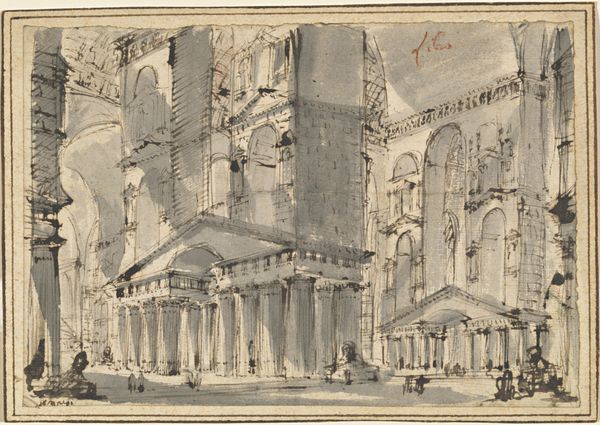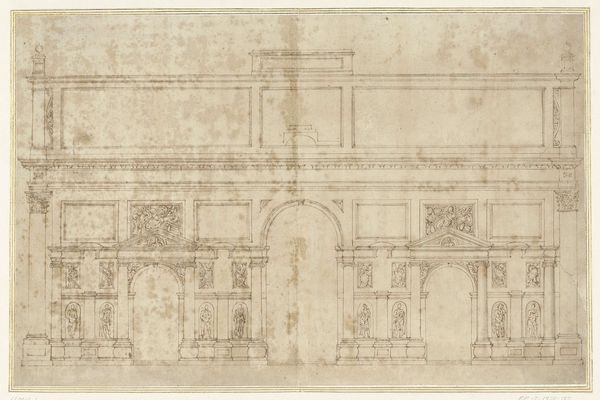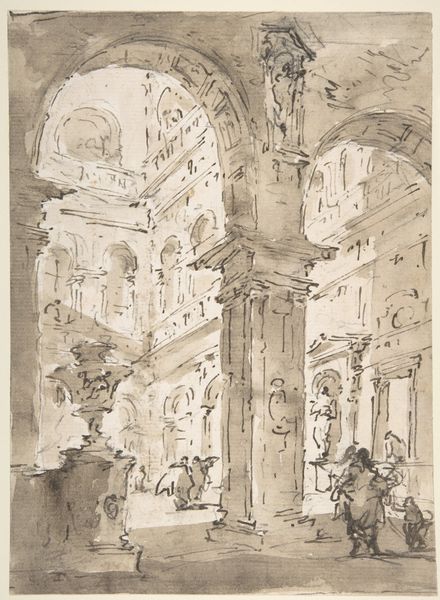
Street Scene with a Palace Facade and an Arcade 1707 - 1794
0:00
0:00
drawing, print, paper, watercolor, ink, architecture
#
drawing
#
baroque
#
ink painting
# print
#
landscape
#
perspective
#
paper
#
form
#
watercolor
#
ink
#
line
#
cityscape
#
watercolor
#
architecture
#
building
Dimensions: 8 x 10 5/16in. (20.3 x 26.2cm)
Copyright: Public Domain
Curator: Here we have Fabrizio Galliari's "Street Scene with a Palace Facade and an Arcade," a drawing rendered sometime between 1707 and 1794. The artwork now resides at the Metropolitan Museum of Art. Editor: Wow, it feels unfinished, doesn't it? Like a half-remembered dream of a grand city. All those arches and columns dissolving into thin air. Curator: I find it remarkable how Galliari uses line and wash to evoke such depth with such economy. It’s a masterclass in the Baroque manipulation of perspective and form. Notice the contrast between the precisely rendered details of the palace facade, and the looser strokes suggesting receding space. Editor: Exactly. There's something haunting about the ambiguity, though. Like a stage set abandoned mid-performance. It reminds me a bit of Piranesi, that same fascination with architectural grandeur tinged with melancholic decay. What's up with the weird pillar, though? Curator: The pillars likely hold symbolic importance rooted in architectural theory. Columns have represented strength and order throughout civilizations—linking, in this drawing, civic authority with divine decree. Editor: Mmm, interesting. You know, despite the somber tones, there’s an underlying playfulness. Look at the speed of the strokes, the almost casual way the arches curve into nothingness. It's as if Galliari is reminding us that even the most solid-looking structures are ultimately ephemeral. I bet I could use it for an amazing theater backdrop if the perspective worked! Curator: Such use of perspective was critical to the scenographic innovation characteristic of Italian Baroque theater design at the time. Architects pushed new extremes of visual and emotional spectacle on the public. Editor: Makes perfect sense! It is amazing how an artist can play with expectation like this. Curator: Indeed. This piece invites us to consider how much of our understanding of power is built upon illusion. Editor: Leaving us with something fleeting, and full of intrigue!
Comments
No comments
Be the first to comment and join the conversation on the ultimate creative platform.
